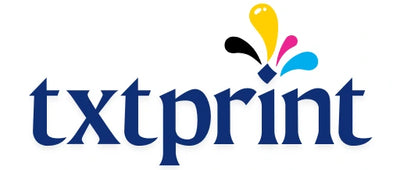Direct-to-Film (DTF) transfers are revolutionizing the custom apparel industry, offering vibrant colors, durability, and versatility on almost any fabric. Whether you’re a small business owner, DIY enthusiast, or a merch brand, this guide will walk you through the entire DTF process—from concept to finished product—while sharing insider tips to avoid common pitfalls.
Why DTF Transfers?
Before diving into the steps, let’s understand why DTF is a game-changer:
-
Works on Any Fabric: Cotton, polyester, blends—even dark colors!
-
Vibrant Details: Crisp gradients, intricate designs, and photorealistic prints.
-
Durability: Withstands 50+ washes without cracking or fading.
-
Cost-Effective for Small Batches: No minimum orders, unlike screen printing.
Link: What is DTF Printing?
Step 1: Design Your Artwork
Tip: Start with vector files (AI, EPS) for scalability. Raster images (PNG, JPEG) must be 300 DPI at print size.
-
Software: Use Adobe Illustrator, Canva, or free tools like Inkscape.
-
Color Mode: Convert to CMYK for accurate printing (RGB can cause color shifts).
-
Bleed Area: Extend designs 0.125” beyond edges to avoid white borders.
Common Mistake: Low-resolution files result in blurry prints. Always double-check DPI!
Step 2: Print Your DTF Transfer
What You’ll Need:
-
DTF printer (e.g., Epson F2100) or order on TxTPrint for Professional Custom Printing in US
-
PET film sheets
-
White DTF ink and adhesive powder
Process:
-
Print your design onto the PET film.
-
Apply adhesive powder to wet ink (prevents cracking).
-
Cure the transfer in a heat press or conveyor dryer (250°F for 2-3 minutes).
Pro Tip: Use a shaker tray to evenly distribute adhesive powder and reduce waste.
Internal Link: Shop DTF Supplies
Step 3: Prepare the Garment
-
Pre-Press: Heat the garment for 5-10 seconds to remove moisture and wrinkles.
-
Positioning: Use a heat press with a laser guide or alignment jig for precision.
Best Fabrics:
-
Cotton: Classic feel, ideal for soft prints.
-
Polyester: Brighter colors but requires lower heat (320°F).
Link: Screen Printing Apparel Care Guide – Maximize garment lifespan
Step 4: Heat Press the Transfer
Settings:
-
Temperature: 320°F (adjust for synthetic blends).
-
Pressure: Medium (40-50 psi).
-
Time: 10-15 seconds.
Steps:
-
Place the transfer film-side up on the garment.
-
Press firmly, then peel hot for a glossy finish or cool for a matte look.
-
For extra softness, re-press without the film for 3-5 seconds.
Pro Tip: Test settings on scrap fabric first!
Link: Heat Press Troubleshooting Guide – Fix uneven transfers or Order on TxTPrint
Step 5: Post-Press Care
-
Wait 24 Hours: Let the adhesive fully cure before washing.
-
Wash Inside Out: Use cold water and mild detergent.
-
Avoid Ironing: Direct heat can melt the transfer.
Step 6: Quality Check & Iterate
Inspect for:
-
Alignment: Centered and straight.
-
Adhesion: No peeling edges.
-
Color Accuracy: Matches your digital proof.
Redo? Lightly sand the fabric and reapply a new transfer.
Link: Bulk 50+ Order Discounts – Save on large runs
Common DTF Mistakes (and How to Avoid Them)
-
Skipping Adhesive Powder: Causes peeling. Always shake off excess.
-
Overheating Synthetic Fabrics: Melts fibers. Use a Teflon sheet.
-
Ignoring File Resolution: Blurry prints waste time and money.
Applications of DTF Transfers
-
Small Businesses: Custom merch with no minimum orders.
-
Events: Team jerseys, festival wear.
-
Fashion Brands: Limited-edition drops with intricate designs.
Final Thoughts
Mastering DTF transfers opens endless creative and commercial opportunities. With the right tools, techniques, and attention to detail, you can produce professional-grade apparel that stands out.




